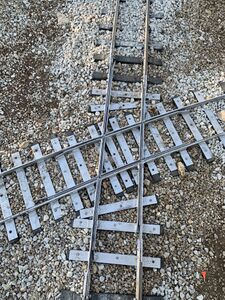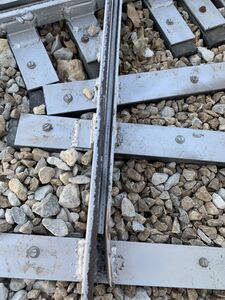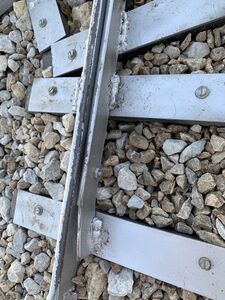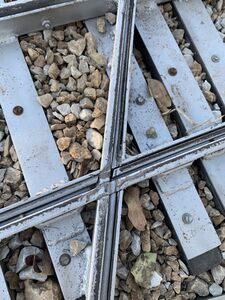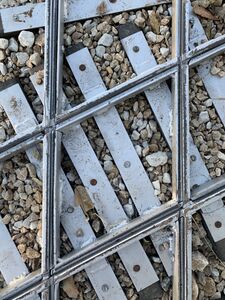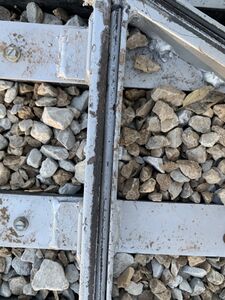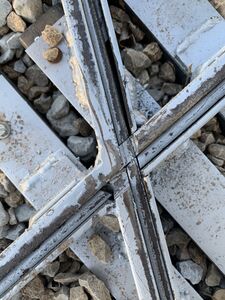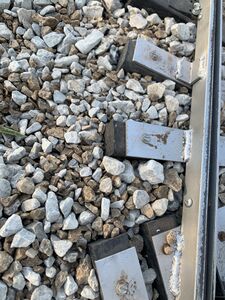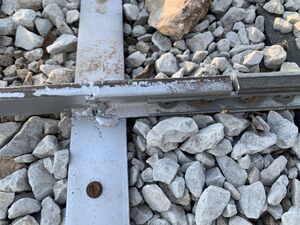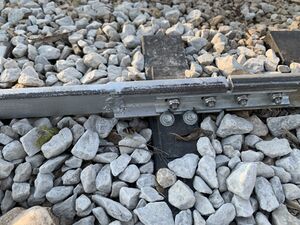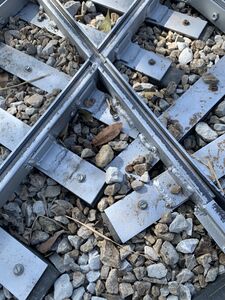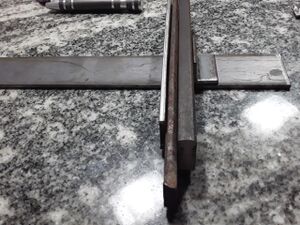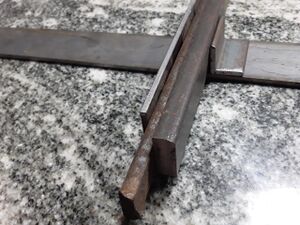Diamond: Difference between revisions
Jump to navigation
Jump to search
(→CIG) |
|||
| Line 1: | Line 1: | ||
[[Category:Right of Way]] | [[Category:Right of Way]] | ||
== Types == | |||
=== Full Flange Bearing === | |||
From [https://www.rail-suppliers.com/product/full-flange-bearing-diamond/ <i>Progress Rail</i>]: | |||
: Eliminates wheel contact at the flange way intersection of the diamond. Significantly reduces impact that leads to accelerated maintenance and eventual replacement of the castings and sub-components. | |||
[[File:Progress-Rail-Full-Flange.jpg|thumb|center|500px]] | |||
== Examples == | == Examples == | ||
| Line 5: | Line 15: | ||
=== CIG === | === CIG === | ||
Ken Smith built this [[Diamond|diamond]] for the [[Comanche & Indian Gap Railroad]]. He used flat bar for all components, with the exception of the short section of steel rail as a transition between the diamond and the aluminum rail. | Ken Smith built this [[Diamond|diamond]] for the [[Comanche & Indian Gap Railroad]]. He used flat bar for all components, with the exception of the short section of steel rail as a transition between the diamond and the aluminum rail. This diamond could be adapted to Full Flange Bearing type. | ||
Here is the material list used for constructing the diamond (either [[HRS]] or [[CRS]]): | Here is the material list used for constructing the diamond (either [[HRS]] or [[CRS]]): | ||
Revision as of 21:01, 29 May 2021
Types
Full Flange Bearing
From Progress Rail:
- Eliminates wheel contact at the flange way intersection of the diamond. Significantly reduces impact that leads to accelerated maintenance and eventual replacement of the castings and sub-components.
Examples
CIG
Ken Smith built this diamond for the Comanche & Indian Gap Railroad. He used flat bar for all components, with the exception of the short section of steel rail as a transition between the diamond and the aluminum rail. This diamond could be adapted to Full Flange Bearing type.
Here is the material list used for constructing the diamond (either HRS or CRS):
- 1/2 by 1 inch flat
- 1/4 by 3/4 inch flat
- 1/8 by 1 inch flat
- 2 by 1/8 inch flat
- 1 by 1 inch angle

